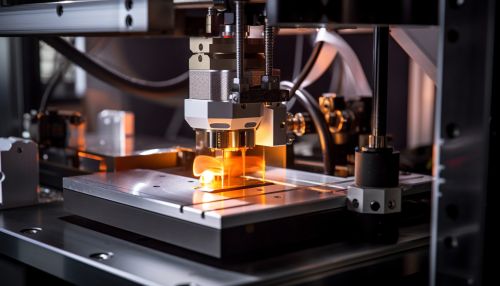Advances in Nanoscale 3D Printing Technologies
Introduction
Nanoscale 3D printing, also known as nanofabrication, is a rapidly evolving field that has seen significant advances in recent years. This technology allows for the creation of structures and devices at the nanometer scale, opening up new possibilities in a variety of fields including electronics, medicine, and materials science.


Principles of Nanoscale 3D Printing
Nanoscale 3D printing operates on the same basic principles as traditional 3D printing, but with a much higher degree of precision. The process involves depositing materials layer by layer to build up a three-dimensional object. However, instead of using plastic or metal as the printing material, nanoscale 3D printers use nanoparticles or other nanoscale materials.
Techniques in Nanoscale 3D Printing
There are several techniques used in nanoscale 3D printing, each with its own strengths and limitations.
Two-Photon Polymerization (2PP)
Two-photon polymerization (2PP) is a technique that uses a focused laser to polymerize a photosensitive material. This allows for the creation of complex 3D structures with a resolution down to the nanometer scale.
Electron Beam Lithography
Electron beam lithography is another technique used in nanoscale 3D printing. This method uses a focused beam of electrons to pattern a resist material. The high energy of the electrons allows for a high degree of precision, making this technique suitable for creating nanoscale devices and structures.
Nanoimprint Lithography
Nanoimprint lithography is a technique that uses a mold to imprint a pattern onto a substrate. This method is capable of producing large-scale patterns with nanoscale features.
Applications of Nanoscale 3D Printing
Nanoscale 3D printing has a wide range of applications across various fields.
Electronics
In the field of electronics, nanoscale 3D printing can be used to create nanoelectronic devices with superior performance characteristics. This includes transistors, sensors, and other components that are smaller, faster, and more energy-efficient than their traditional counterparts.
Medicine
Nanoscale 3D printing also has potential applications in medicine. For example, it can be used to create nanomedicine devices for targeted drug delivery, or to fabricate scaffolds for tissue engineering.
Materials Science
In materials science, nanoscale 3D printing can be used to create materials with unique properties. This includes metamaterials, which are engineered to have properties not found in nature, and nanocomposites, which combine different materials at the nanoscale to achieve superior performance characteristics.
Future Directions
While nanoscale 3D printing has already seen significant advances, there is still much potential for further development. Future research directions include improving the resolution and speed of the printing process, developing new materials for nanoscale 3D printing, and exploring new applications of this technology.
